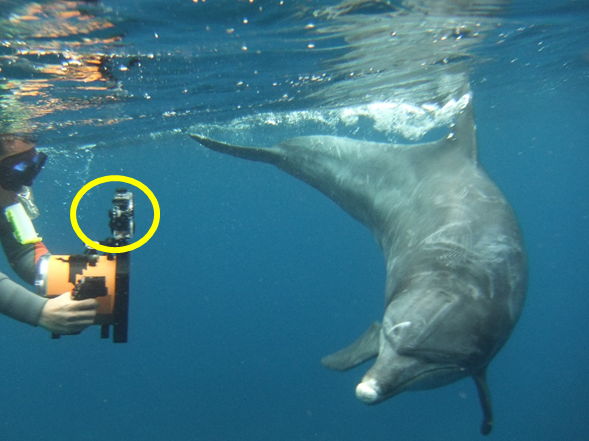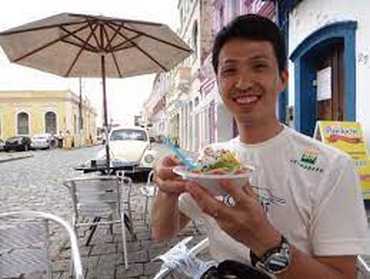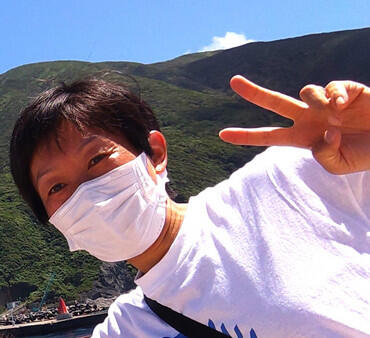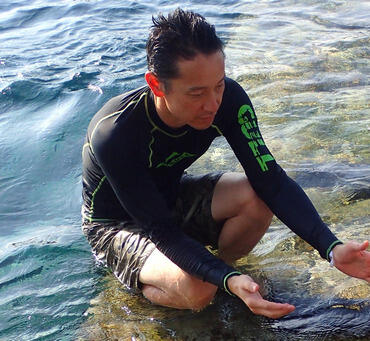Summary of our research
MORISAKA Tadamichi (Associate Professor, Graduate School of Bioresources, Mie University; first & corresponding author), HAMA Hiromitsu (Visiting Professor at Osaka Metropolitan University [Professor Emeritus at Osaka City University]), SAKAI Mai (Lecturer, Department of Fisheries, Faculty of Agriculture, Kindai University), and KOGI Kazunobu (Mikurashima Tourism Association) successfully measured the body lengths of 85 wild Indo-Pacific bottlenose dolphins off Mikura Island using a 3D camera with an original, simple, non-invasive method.
Wild Indo-Pacific bottlenose dolphins inhabiting the clear waters off Mikura Island are an important resource, for both sightseeing and scientific research, as it is possible to observe the dolphins underwater at close range. The individual identification study showed that around 30% of dolphins had disappeared from the area from 2008 to 2011. This prompted us to monitor population health using body length. We decided to make a "growth chart" of body length for this population in order to determine whether the nutritional status of the population was deteriorating. However, there was no simple, non-invasive technique with which to measure free-ranging wild dolphins underwater.
First, we developed a new method that requires users to take pictures of the dolphins underwater with a commercially available 3D camera in an underwater housing. Data collected over a 6-year period was then used to measure the body length of 85 individual dolphins. We then calculated length-at-age estimates and drew a "growth chart" of body size for the population. Similar to the "standard growth chart" used to assess the growth and development of human children, our method enabled us to easily identify "outlying" dolphins with smaller body lengths compared to the "growth chart," owing to a nutritional deficiency due to a reduction in prey density. We will continue to monitor population health using this system.
The study was published online in the German scientific journal "Mammalian Biology" on 22nd September 2022.
Body length and growth pattern of free-ranging Indo-Pacific bottlenose dolphins off Mikura Island estimated using an underwater 3D camera
https://doi.org/10.1007/s42991-022-00304-9

Researcher information

MORISAKA Tadamichi
Associate Professor, Cetacean Research Center, Graduate School of Bioresources
Specialized area:
Bioacoustics, Ethology, Cetology
Current research field:
Description of interesting behaviors in cetaceans, Development of the elementary techniques for cetacean conservation, Basic study for cetacean communication and society

HAMA Hiromitsu
Visiting Professor (Professor Emeritus at Osaka City University), Osaka Metropolitan University
Specialized area:
Image processing, Computer vision
Current research field:
Development of the measurement system for large mammals using image processing technique, Development of an independent living support system for elderly people.

SAKAI Mai
Lecturer, Department of Fisheries, Faculty of Agriculture, Kindai University
Specialized area:
Ethology, Marine mammalogy
Current research field:
Communication and sociality of marine mammals, Enrichment for captive marine mammals

KOGI Kazunobu
Executive Director, Mikurashima Tourism Association
Specialized area:
Conservation biology, Cetology
Current research field:
Conservation of cetacean off Mikura Island, Description of fauna in Mikura Island